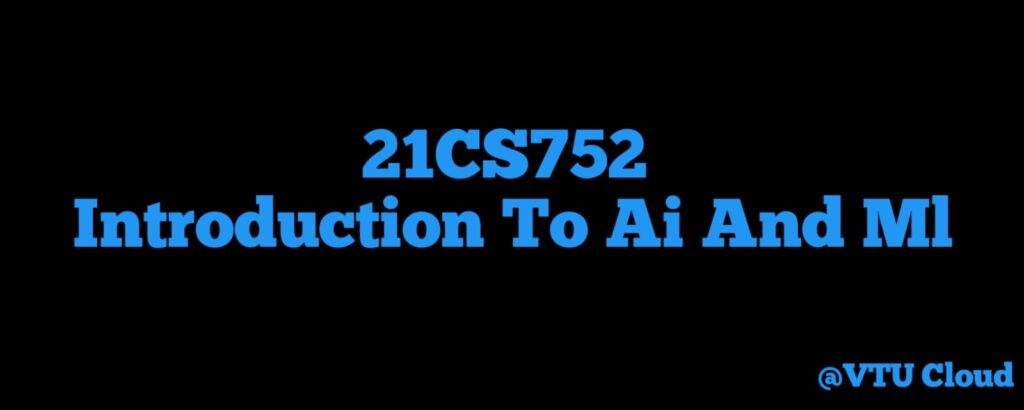21CS752 Introduction To Ai And Ml

Course Learning Objectives
CLO1. Understands the basics of AI, history of AI and its foundations, basic principles of AI for
problem
solving
CLO2. Explore the basics of Machine Learning & Machine Learning process, understanding data
CLO3. Understand the Working of Artificial Neural Networks
SYLLABUS COPY
MODULE - 1
Introduction: What is AI, The foundation of Artificial Intelligence, The history of Artificial Intelligence,
Intelligent Agents: Agents and Environments, Good Behaviour: The concept of rationality, the nature of
Environments, the structure of Agents.
MODULE - 2
Problem solving by searching: Problem solving agents, Example problems, Searching for solutions,
Uniformed search strategies, Informed search strategies, Heuristic functions
MODULE - 3
Introduction to machine learning: Need for Machine Learning, Machine Learning Explained, and
Machine Learning in relation to other fields, Types of Machine Learning. Challenges of Machine Learning,
Machine Learning process, Machine Learning applications.
Understanding Data: What is data, types of data, Big data analytics and types of analytics, Big data
analytics framework, Descriptive statistics, univariate data analysis and visualization
MODULE - 4
Understanding Data
Bivariate and Multivariate data, Multivariate statistics , Essential mathematics for Multivariate data,
Overview hypothesis, Feature engineering and dimensionality reduction techniques,
Basics of Learning Theory Introduction to learning and its types, Introduction computation learning
theory, Design of learning system, Introduction concept learning.
Similarity-based learning Introduction to Similarity or instance based learning, Nearest-neighbour
learning, weighted k- Nearest – Neighbour algorithm.
MODULE - 5
Artificial Neural Network Introduction, Biological neurons, Artificial neurons, Perceptron and
learning theory, types of Artificial neural Network, learning in multilayer Perceptron, Radial basis
function neural network, self-organizing feature map,
Course outcome
At the end of the course the student will be able to:
CO 1. Design intelligent agents for solving simple gaming problems.
CO 2. Have a good understanding of machine leaning in relation to other fields and fundamental
issues and
Challenges of machine learning
CO 3. Understand data and applying machine learning algorithms to predict the outputs.
CO 4. Model the neuron and Neural Network, and to analyze ANN learning and its applications.
Suggested Learning Resources
Textbooks
1. Stuart Russel, Peter Norvig: “Artificial Intelligence A Modern Approach”, 3rd Edition, Pearson
Education, 2015.
2. S. Sridhar, M Vijayalakshmi “Machine Learning”. Oxford ,2021
REFERENCE BOOKS
1. Elaine Rich, Kevin Knight: “Artificial Intelligence”, 3rd Edition, Tata McGraw Hill,
2009
2. Nils J. Nilsson: “Principles of Artificial Intelligence”, Elsevier, 1980